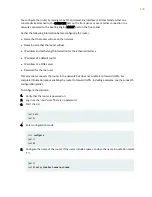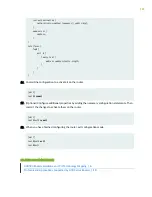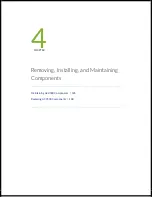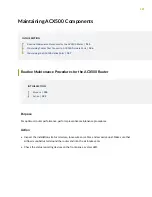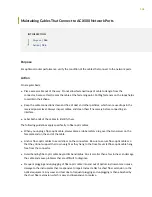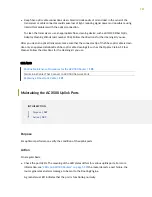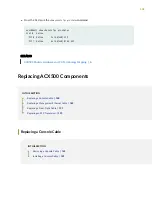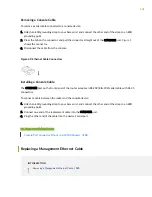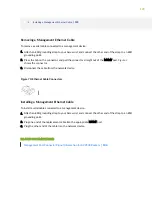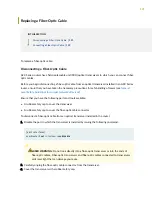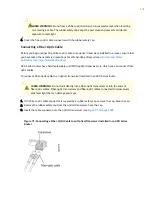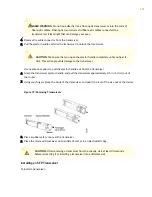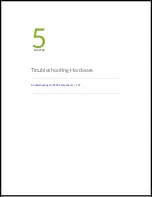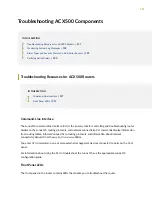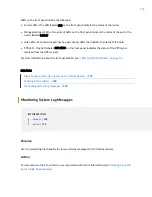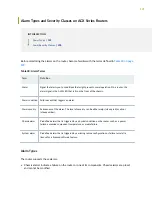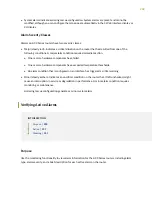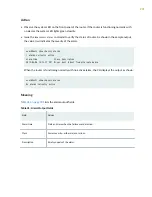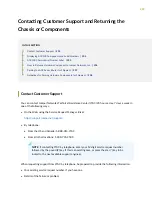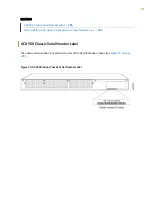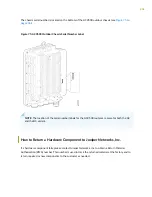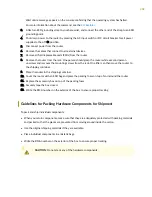
4. Secure the cables so that they are not supporting their own weight. Place excess cable out of the
way in a neatly coiled loop. Placing fasteners on a loop helps cables maintain their shape.
CAUTION: Do not bend fiber-optic cables beyond their minimum bend radius. An arc
smaller than a few inches in diameter can damage the cables and cause problems that
are difficult to diagnose.
Do not let fiber-optic cables hang free from the connector. Do not allow fastened
loops of cables to dangle, which stresses the cables at the fastening point.
SEE ALSO
Maintaining Cables That Connect to ACX1000 and ACX1100 Network Ports
Fiber-Optic Cable Signal Loss, Attenuation, and Dispersion
Calculating Power Budget and Power Margin for Fiber-Optic Cables
Replacing an SFP Transceiver
IN THIS SECTION
Removing an SFP Transceiver | 193
Installing an SFP Transceiver | 194
Removing an SFP Transceiver
Removing a transceiver does not interrupt router functioning, but the removed transceiver no longer
receives or transmits data.
To remove a transceiver (see
Figure 4
):
1. Have ready a replacement transceiver or a transceiver slot plug, an antistatic mat, and a rubber safety
cap for the transceiver.
2. Attach an ESD grounding strap to your bare wrist, and connect the other end of the strap to an ESD
grounding point.
3. Label the cables connected to the transceiver so that you can reconnect them correctly later.
193


